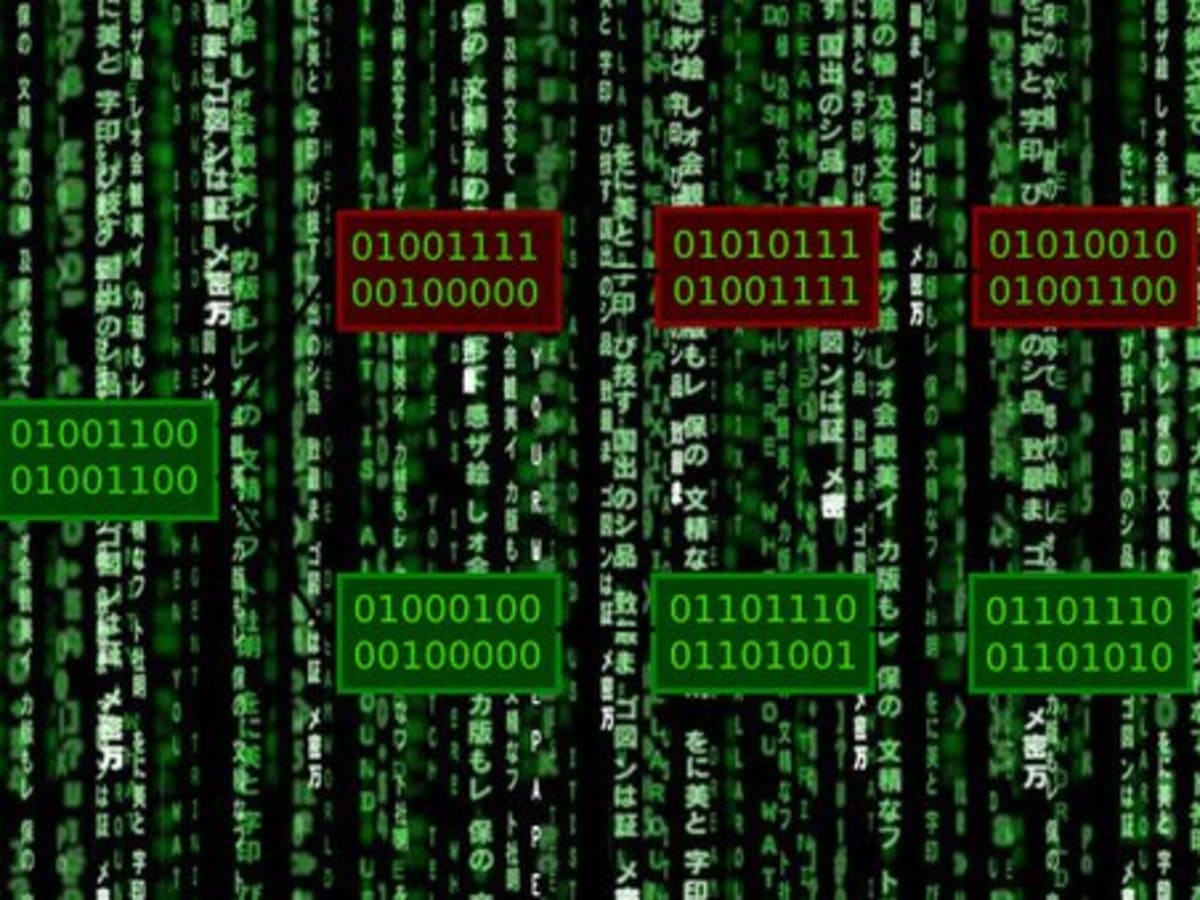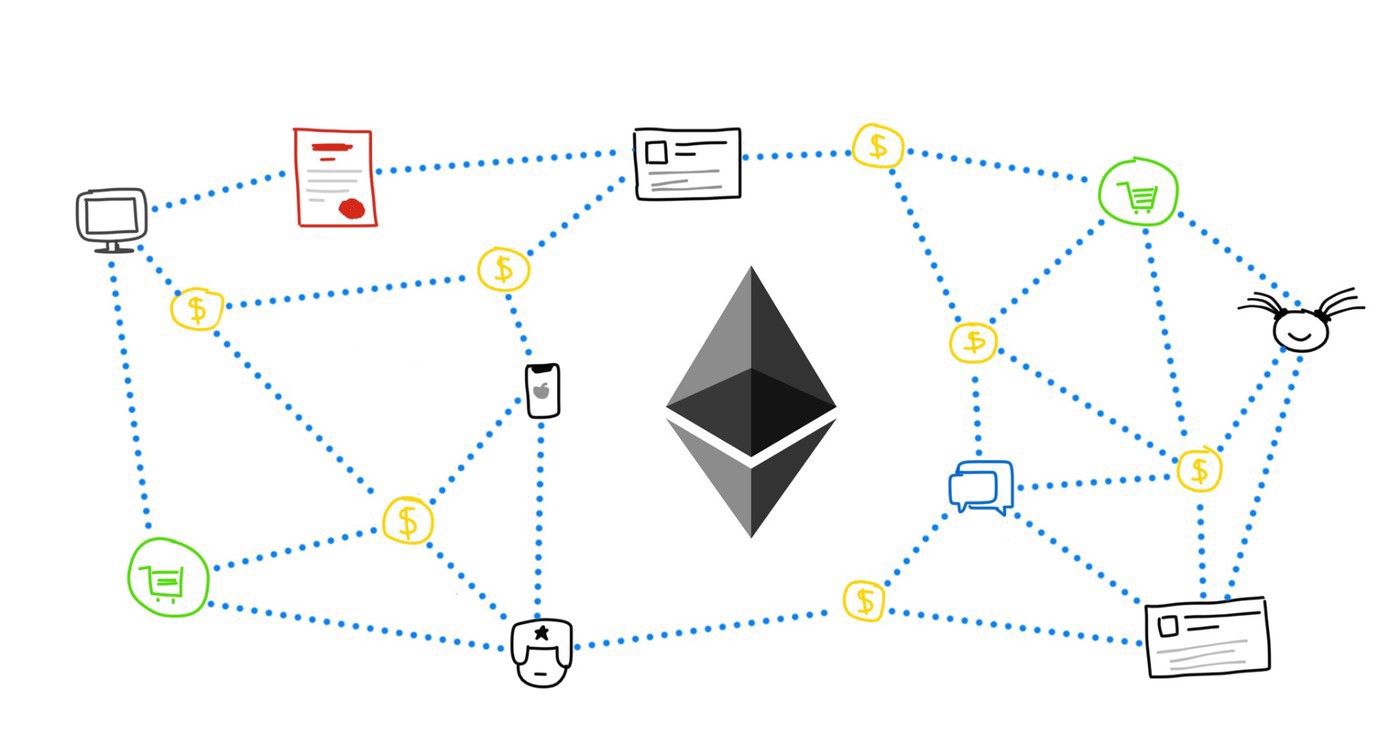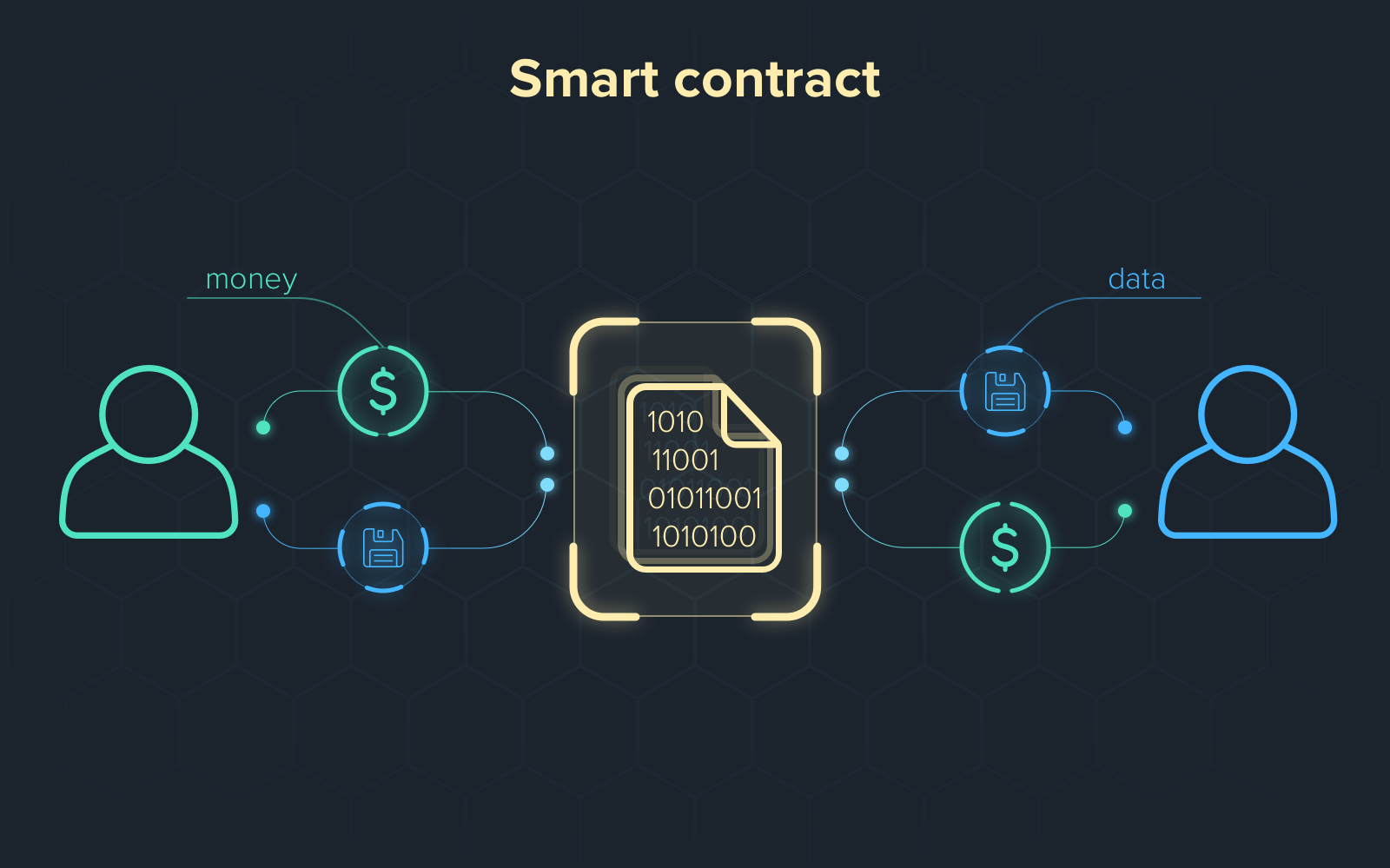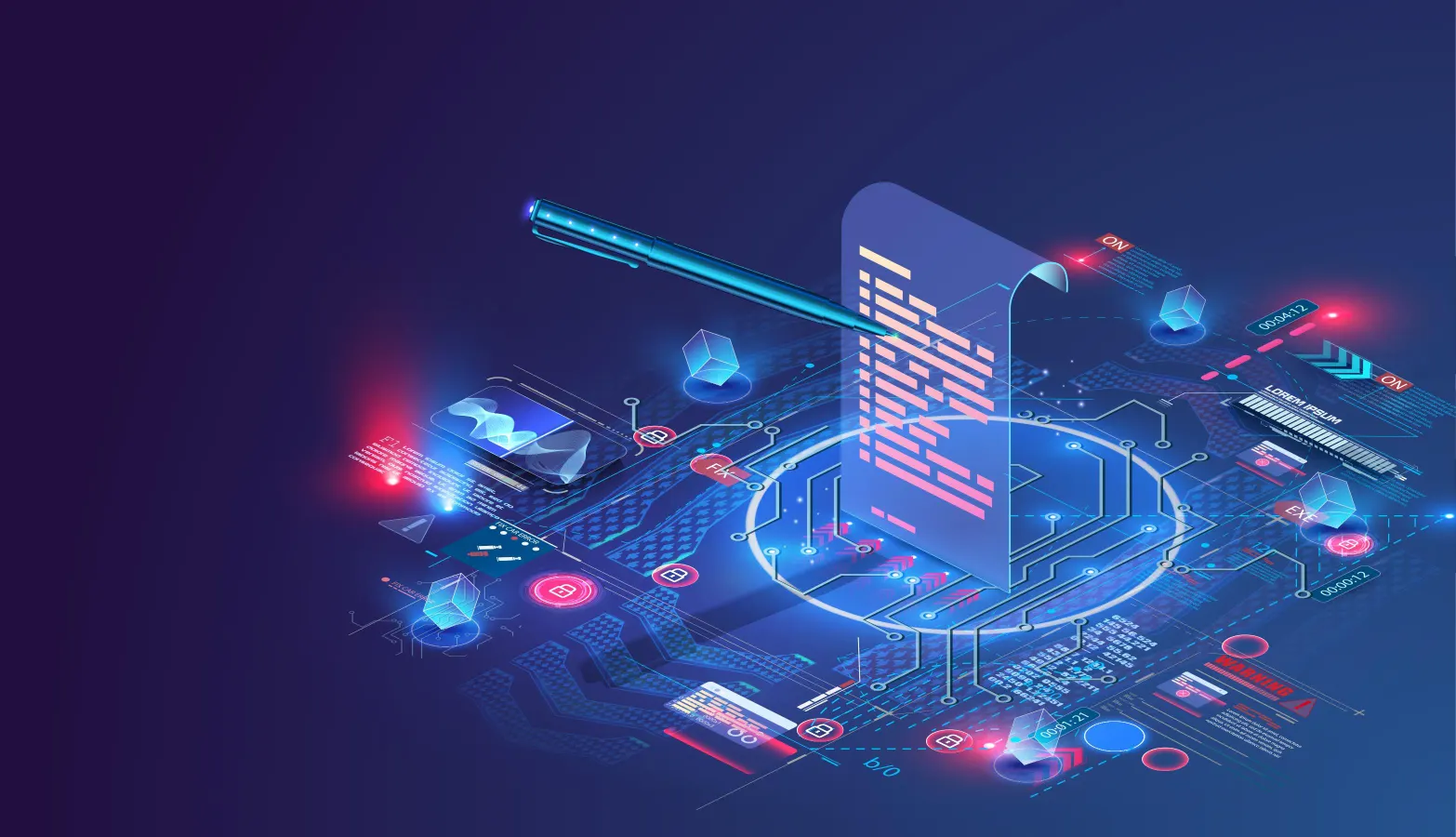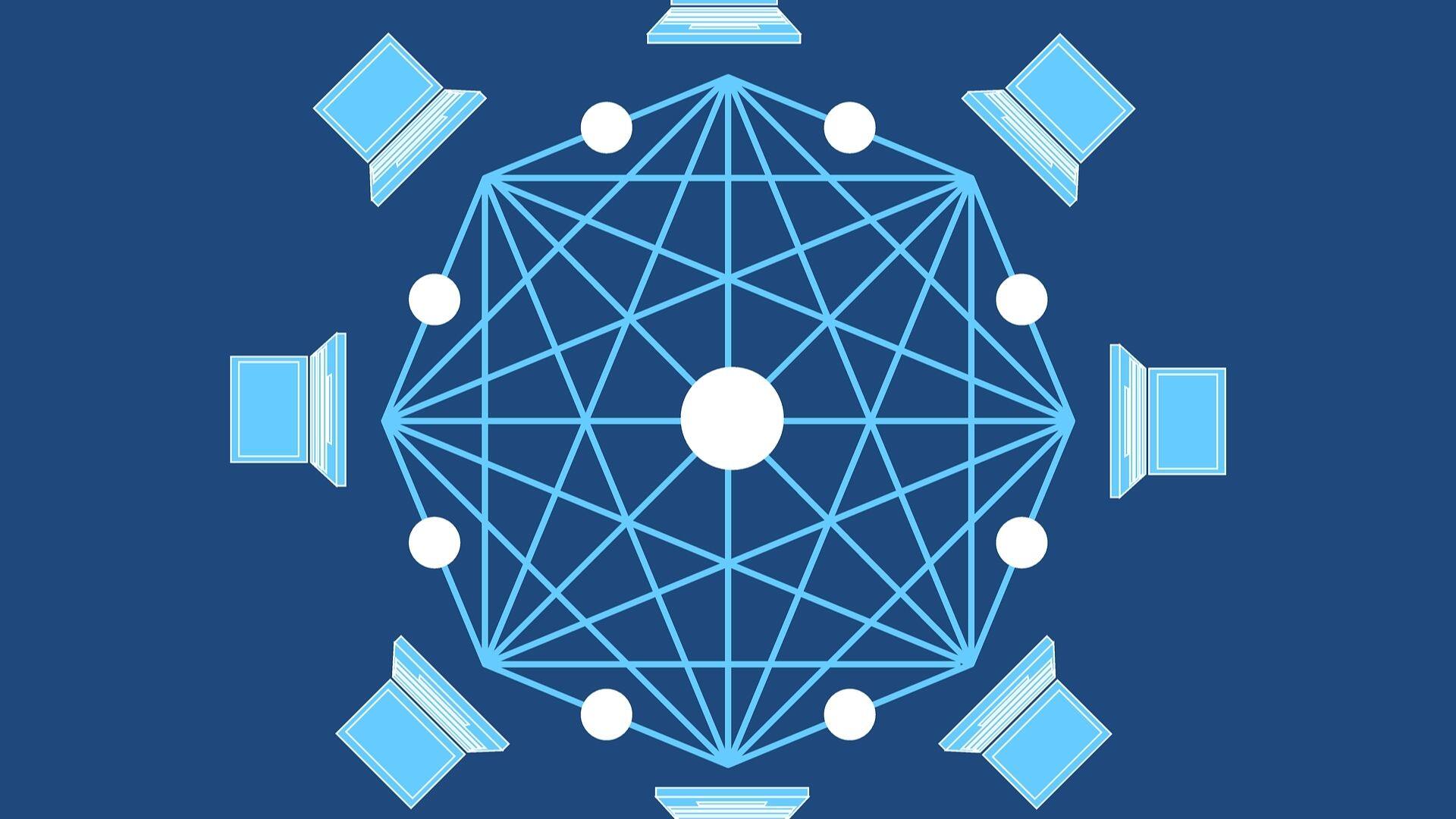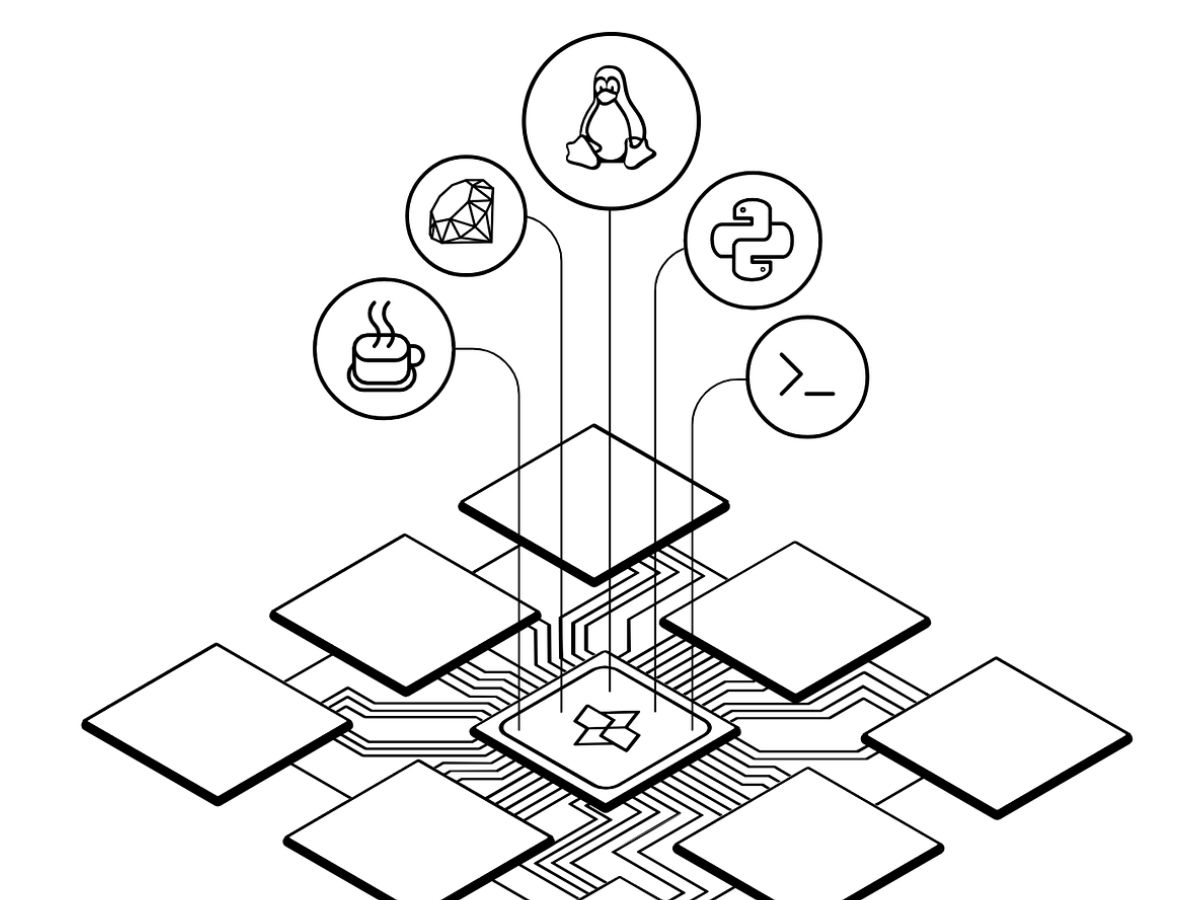Introduction
Welcome to the exciting world of blockchain coding! As technology continues to evolve, blockchain has emerged as one of the most promising and disruptive innovations of recent times. This decentralized and transparent technology has the potential to revolutionize various industries, including finance, supply chain management, healthcare, and more.
If you’re a developer looking to dive into blockchain coding, this guide is here to help you get started. Whether you’re a beginner or an experienced programmer, understanding the fundamentals of blockchain and learning how to code for this technology can open up a world of opportunities.
In this article, we’ll walk you through the essential concepts of blockchain coding, provide step-by-step instructions on setting up a development environment, and guide you in writing and deploying smart contracts. We’ll also touch upon important topics like blockchain security measures, testing and debugging, and optimizing and scaling blockchain applications.
Before we delve into the technical aspects, let’s have a brief overview of what blockchain is and why it is gaining so much attention.
What is Blockchain?
At its core, blockchain is a decentralized and immutable digital ledger. It consists of a chain of blocks, where each block contains a list of verified and time-stamped transactions. What sets blockchain apart is its distributed nature, meaning that multiple participants (or nodes) share and maintain a copy of the ledger.
This distributed design ensures that there is no central authority controlling the blockchain. Instead, consensus algorithms are used to validate and agree on the state of the ledger. This decentralized approach brings several benefits, including increased security, transparency, and elimination of intermediaries in financial transactions.
Blockchain technology is built on cryptographic principles, making it highly secure and resistant to tampering. Additionally, the transparency of the blockchain enables participants to track and verify transactions without the need for a trusted third party.
Now that we have a basic understanding of blockchain, let’s move on and set up our development environment to start coding for this revolutionary technology.
What is Blockchain?
Blockchain is a revolutionary technology that has gained immense popularity in recent years. At its core, blockchain is a decentralized and transparent digital ledger that records and verifies transactions. It is often referred to as a “chain of blocks” because each block contains a list of validated transactions that are linked together using cryptography.
One of the key features of blockchain is its decentralized nature. Unlike traditional centralized systems where a single authority controls the ledger, blockchain is distributed among multiple participants known as nodes. Each node has a copy of the entire blockchain and participates in the validation and verification process.
Blockchain operates on the principle of consensus, ensuring that all participating nodes agree on the state of the ledger. This is done through various consensus algorithms such as Proof-of-Work (PoW) and Proof-of-Stake (PoS), which require participants to provide computational power or stake their own tokens to validate transactions.
One of the primary advantages of blockchain is its transparency. All transactions recorded on the blockchain are visible to all participants, and once a transaction is added to the blockchain, it cannot be altered or deleted. This transparency and immutability make blockchain an ideal technology for industries such as finance, supply chain management, healthcare, and more, where trust and security are essential.
Blockchain technology is also known for its security. Each block in the blockchain contains a unique cryptographic hash that is derived from the data within the block. Any modification to the data will result in a different hash, thereby alerting the network of tampering attempts. Moreover, the distributed nature of blockchain makes it resistant to attacks, as compromising a single node will not affect the overall integrity of the network.
Blockchain is not limited to just recording financial transactions. It can also be used to store and execute smart contracts. Smart contracts are self-executing contracts with predefined rules and conditions encoded within them. Once certain conditions are met, the smart contract is automatically executed, making it secure and efficient.
Overall, blockchain technology has the potential to disrupt various industries by providing increased security, transparency, and efficiency. Understanding the underlying principles of blockchain is crucial for developers looking to build decentralized applications and smart contracts.
In the next section, we will guide you through the process of setting up your development environment to start coding for blockchain.
Setting Up the Development Environment
Before you can start coding for blockchain, it is crucial to set up your development environment. This will ensure that you have all the necessary tools and frameworks in place to write, compile, and deploy your blockchain applications.
The specific requirements for your development environment may vary depending on the blockchain platform you choose to work with. However, there are some common components that you will typically need to install and configure. Let’s go through the essential steps.
1. Operating System and Hardware
The first step is to ensure that you have a compatible operating system and hardware setup. Most blockchain platforms support Windows, macOS, and Linux. Check the documentation of your chosen blockchain platform for the recommended system requirements.
2. Text Editor or Integrated Development Environment (IDE)
You will need a text editor or an integrated development environment (IDE) to write your blockchain code. Popular choices include Visual Studio Code, Sublime Text, and Atom. These editors provide syntax highlighting, code formatting, and other helpful features to enhance your coding experience.
3. Blockchain Platform and Tools
The next step is to choose a blockchain platform to develop on. Ethereum is one of the most widely used platforms and provides extensive documentation and developer resources. Other popular options include Hyperledger Fabric, Corda, and EOS. Install the necessary tools and dependencies for your chosen platform, which may include blockchain clients, programming languages, and development frameworks.
4. Development Network
To test and deploy your blockchain applications, you will need a development network. This allows you to interact with the blockchain and simulate real-world scenarios. Many blockchain platforms provide tools to create a local development network for testing purposes.
5. Solidity Compiler
If you are developing applications for Ethereum, you will need the Solidity compiler. Solidity is a smart contract programming language used for writing Ethereum-compatible smart contracts. The compiler translates Solidity code into bytecode that can be executed on the Ethereum Virtual Machine (EVM).
Once you have set up your development environment, you are ready to start coding for the blockchain. In the next section, we will delve into the fundamentals of smart contracts, which will be the building blocks of your blockchain applications.
Choosing the Blockchain Platform
When it comes to developing blockchain applications, choosing the right blockchain platform is crucial. The blockchain platform you choose will determine the tools, programming languages, and frameworks you will use to develop your applications. Each platform offers unique features and caters to different use cases, so it’s important to understand your requirements before making a decision.
Let’s explore some of the most popular blockchain platforms and their key features:
1. Ethereum
Ethereum is the most widely used blockchain platform for building decentralized applications (DApps) and smart contracts. It offers a robust ecosystem with extensive developer documentation, tools, and resources. Ethereum supports the Solidity programming language for writing smart contracts and provides the Ethereum Virtual Machine (EVM) for executing them. Ethereum also has its own cryptocurrency called Ether (ETH) and supports tokenization, enabling developers to create their own tokens.
2. Hyperledger Fabric
Hyperledger Fabric is a blockchain platform developed by the Linux Foundation. It focuses on providing enterprise-grade solutions for industries such as supply chain management, finance, and healthcare. Fabric allows for the creation of private and permissioned blockchain networks, making it suitable for consortiums and business collaborations. It supports smart contracts written in languages like Go, JavaScript, and Java.
3. Corda
Corda is another popular blockchain platform specially designed for the financial industry. It offers features like privacy and scalability, making it suitable for complex financial transactions. Corda uses the Kotlin programming language for writing smart contracts and provides a secure network where participants can transact directly without the need for intermediaries.
4. EOS
EOS is a blockchain platform that aims to provide high-speed and scalable decentralized applications. It uses a delegated proof-of-stake (DPoS) consensus mechanism, allowing for faster transaction processing. EOS supports smart contracts written in the C++ programming language and offers features like governance and resource management.
These are just a few examples of the many blockchain platforms available today. When selecting a platform, consider factors such as your project requirements, performance needs, developer community, and scalability. It’s also helpful to assess the available documentation, tools, and support provided by each platform.
Once you have chosen a blockchain platform, familiarize yourself with its development environment, libraries, and frameworks. This will enable you to leverage the platform’s features and build robust and efficient blockchain applications.
In the next section, we will dive into the fundamentals of smart contracts, which are essential for developing on any blockchain platform.
Understanding Smart Contracts
Smart contracts are an integral part of blockchain technology and play a crucial role in enabling decentralized and tamper-proof transactions. A smart contract is a self-executing contract with the terms and conditions of the agreement directly written into lines of code. These contracts automatically execute when predetermined conditions are met.
Unlike traditional contracts that require intermediaries to ensure compliance, blockchain-based smart contracts eliminate the need for trusted third parties. They are stored on the blockchain and executed by the network of nodes, making them transparent, secure, and verifiable.
Here are some key concepts to understand about smart contracts:
1. Code Execution
Smart contracts are written in specific programming languages such as Solidity in Ethereum or Chaincode in Hyperledger Fabric. Once code is deployed on the blockchain, it remains immutable and can’t be modified without creating a new contract. When the conditions specified in the contract are met, the code is executed, and the contract’s logic is carried out automatically.
2. Decentralization
Smart contracts are executed across a network of nodes, ensuring decentralization and removing the need for a central authority. Each node verifies the contract’s execution, ensuring that the agreement is enforced without relying on a single party. This distributed nature of smart contracts enhances security, reduces the risk of fraud, and increases transparency.
3. Interaction with the Blockchain
Smart contracts can interact with the blockchain, accessing and modifying data stored on the ledger. They can read data from the blockchain, make computations, and update the ledger’s state based on predefined conditions. This allows for complex automated processes and eliminates the need for manual intervention.
4. Triggering Events
Smart contracts can be triggered by external events or specific conditions within the blockchain. For example, in a supply chain scenario, a smart contract can be programmed to execute automatically once a product reaches a designated location, triggering a payment or updating the inventory records.
Smart contracts have a wide range of use cases, including financial transactions, supply chain management, healthcare records management, decentralized applications, and more. By automating and streamlining processes, smart contracts reduce costs, increase efficiency, and enhance trust.
Now that we have a good understanding of smart contracts, the next step is to learn how to write and deploy them. In the next section, we will explore the process of writing smart contracts using popular programming languages and tools.
Writing Smart Contracts
Writing smart contracts is a fundamental skill for blockchain developers. Smart contracts are the backbone of decentralized applications and facilitate automated, trustless transactions. In this section, we’ll explore the process of writing smart contracts using popular programming languages and tools.
1. Solidity
For developers working with Ethereum, Solidity is the go-to programming language for writing smart contracts. Solidity is a statically typed, high-level language designed specifically for Ethereum. It provides features like inheritance, libraries, and user-defined types, making it flexible and powerful.
To write smart contracts in Solidity, you’ll need a text editor or an Integrated Development Environment (IDE) that supports Solidity syntax highlighting and code completion. Some popular choices include Visual Studio Code with the Solidity extension, Remix IDE, and Truffle Suite.
Start by defining the contract using the `contract` keyword in Solidity. Inside the contract, you’ll define the variables, functions, and modifiers that make up the logic of the contract. For example, you can create a contract that represents a basic token with functions for transferring tokens between accounts.
2. Chaincode
If you’re working with Hyperledger Fabric, you’ll write your smart contracts using Chaincode. Chaincode in Hyperledger Fabric is written in programming languages like Go, JavaScript, or Java. Chaincode defines the business logic and data schemas for a smart contract.
To get started with Chaincode development, you’ll need an IDE that supports the chosen programming language. The official Hyperledger Fabric documentation provides extensive resources and tutorials for developing Chaincode applications.
Chaincode contracts are defined as functions that implement the required smart contract interface methods, such as `Init` and `Invoke`. These methods handle the initialization, state updates, and queries for the smart contract.
3. Language-Specific Tools and Frameworks
In addition to the core programming languages, there are several tools and frameworks available to simplify the smart contract development process.
For Ethereum, tools like Truffle and Embark provide development environments and frameworks for testing, deploying, and interacting with smart contracts. They offer functionalities like contract compilation, deployment management, and automated testing.
For Hyperledger Fabric, frameworks like Fabric Contract API and Fabric Client SDK provide higher-level abstractions and APIs to simplify the development of smart contracts and client applications.
When writing smart contracts, it’s important to consider security, efficiency, and gas optimization (in the case of Ethereum). Follow best practices, such as input validation, state management, and code modularity, to ensure robust and safe smart contracts.
Once you have written your smart contracts, the next step is to compile and deploy them on the blockchain. In the next section, we will explore the process of compiling and deploying smart contracts on popular blockchain platforms.
Compiling and Deploying Smart Contracts
After writing smart contracts, the next step is to compile and deploy them onto the blockchain. In this section, we’ll explore the process of compiling and deploying smart contracts on popular blockchain platforms like Ethereum and Hyperledger Fabric.
1. Ethereum
To compile and deploy smart contracts on Ethereum, you’ll need to follow these steps:
- Compile the Solidity code: Use a Solidity compiler like
solcto compile your smart contract code into bytecode that can be executed on the Ethereum Virtual Machine (EVM). - Generate deployment artifacts: After compiling, you’ll obtain an Application Binary Interface (ABI) and a bytecode representation of your contract. The ABI specifies the contract’s interface, while the bytecode represents the contract’s executable code.
- Deploy the contract: Use a deployment tool like
web3.jsorTruffleto deploy your smart contract onto the Ethereum network. You’ll need an Ethereum account with Ether to pay for gas fees during deployment.
During deployment, you’ll receive a transaction hash that identifies the contract deployment transaction. Once the transaction is confirmed and mined, you’ll receive a contract address, which you can use to interact with your deployed contract.
2. Hyperledger Fabric
The process of deploying smart contracts on Hyperledger Fabric, known as Chaincode, involves the following steps:
- Package the Chaincode: Package your Chaincode into a compressed format like a TAR or ZIP file, along with the necessary metadata.
- Install the Chaincode: Use the Hyperledger Fabric command-line interface (CLI) or SDK to install the Chaincode on designated peers in the network.
- Instantiate the Chaincode: Instantiate the installed Chaincode on specific channels within the Fabric network. This process initializes the Chaincode and creates the initial state.
During the instantiation process, you can specify additional configurations such as endorsement policies and initial Chaincode parameters.
3. Testing and Verification
After deploying your smart contracts, it is essential to thoroughly test and verify their functionality. Testing frameworks like Truffle for Ethereum or ChaincodeMocks for Hyperledger Fabric can assist in writing unit tests to ensure the correctness of your smart contracts.
It is also recommended to conduct extensive manual and automated testing, including scenarios where the contract is called with different input parameters and edge cases.
Verifying your smart contracts involves auditing the code for potential security vulnerabilities and following best practices to ensure robustness and correctness.
By successfully compiling, deploying, and testing your smart contracts, you can ensure that your blockchain applications can function as intended and provide secure and reliable services to end-users.
In the next section, we will explore how you can interact with your deployed smart contracts and extract data from the blockchain.
Interacting with the Blockchain
Once you have deployed your smart contracts onto the blockchain, you’ll need to interact with them to perform various operations and retrieve data from the blockchain. In this section, we’ll explore how you can interact with the blockchain and smart contracts.
1. Reading Data from the Blockchain
To read data from the blockchain, you’ll need the contract’s address and the contract’s Application Binary Interface (ABI). The ABI defines the contract’s interface, including its functions and variables.
Using a blockchain library or a specific programming language’s integration with the blockchain, such as web3.js for Ethereum, you can create an instance of the smart contract by providing its ABI and address. With this instance, you can call the contract’s functions that retrieve data from the blockchain.
For example, if you have a smart contract representing a token with a function balanceOf(address) to retrieve an account’s token balance, you can call this function with a specific address to get the balance of that account.
2. Writing Data to the Blockchain
To write data to the blockchain, you’ll need to send a transaction to the smart contract. This transaction represents an action that modifies the state of the contract, such as token transfer or updating a database entry.
Again, using a blockchain library or a specific programming language’s integration, you can create a transaction and sign it with your private key to prove the authenticity of the transaction. The transaction includes the necessary method calls and parameters to execute the desired action on the smart contract.
For example, if you have a smart contract representing a voting system, you can create a transaction with a function call to record a vote for a specific candidate.
3. Event Handling
Smart contracts can emit events to notify external systems about specific occurrences on the blockchain. These events can be captured and processed by applications that are listening for them.
By subscribing to events emitted by a smart contract, you can receive notifications when certain conditions are met. This allows external systems or user interfaces to stay up to date with the changes happening on the blockchain.
Interacting with the blockchain requires a deep understanding of the contract’s functionality, methods, and data structures. It’s important to test and validate your interaction code to ensure it performs as expected and follows the contract’s rules.
In the next section, we will discuss important security measures that you should consider when developing blockchain applications to ensure the integrity and confidentiality of your data.
Implementing Blockchain Security Measures
Implementing robust security measures is essential when developing blockchain applications to protect the integrity, confidentiality, and availability of your data. In this section, we’ll explore some important security measures that you should consider when working with blockchain.
1. Secure Development Practices
Adopting secure development practices is crucial to minimize vulnerabilities in your smart contracts and blockchain applications. This includes following best practices such as input validation, secure coding patterns, and thorough testing to identify and mitigate potential security risks. It’s also important to stay updated with the latest security advisories and patches for the frameworks and libraries you use.
2. Access Control and Permissions
Implementing proper access control and permissions is critical to ensure that only authorized entities can interact with your blockchain. This can be achieved by defining appropriate role-based access control (RBAC) mechanisms, where specific roles have predefined permissions to read or modify certain data or execute specific actions. Smart contracts should enforce these access control rules to prevent unauthorized access and ensure the integrity of the blockchain data.
3. Encryption and Data Protection
Protecting sensitive data is paramount in blockchain applications. Encryption techniques should be applied to sensitive data stored on the blockchain, ensuring that only authorized parties can access and decrypt it. Secure key management and storage mechanisms should also be in place to prevent key compromise and unauthorized decryption of data.
4. Regular Audits and Code Reviews
Regular security audits and code reviews are essential to identify and address potential vulnerabilities in your blockchain applications. Both internal and external audits can help uncover security flaws, design weaknesses, and potential exploits. Conducting code reviews with experienced developers can help identify coding errors, logic flaws, and potential attack vectors.
5. Network and Infrastructure Security
Implementing strong network and infrastructure security measures is crucial to protect the blockchain ecosystem. This includes using secure communication protocols, implementing firewalls, regularly patching and updating software, and monitoring network traffic for any suspicious activities. Additionally, employing robust authentication and authorization mechanisms for network participants ensures that only trusted entities can join the network.
6. Consensus Mechanism Security
The underlying consensus mechanism in a blockchain network must be secure and resistant to attacks. Whether it’s Proof-of-Work (PoW), Proof-of-Stake (PoS), or another consensus algorithm, understanding the security properties and vulnerabilities of the chosen mechanism is essential. Implementing mechanisms to prevent 51% attacks, double-spending, and other potential vulnerabilities specific to the consensus mechanism is crucial to maintain the integrity of the blockchain.
By incorporating these security measures into your blockchain applications, you can mitigate the risk of potential security breaches and ensure the protection of your data and the integrity of your blockchain ecosystem.
In the next section, we will discuss important testing and debugging practices to ensure the reliability and functionality of your blockchain code.
Testing and Debugging Blockchain Code
Testing and debugging are crucial stages in the development process to ensure the reliability and functionality of your blockchain code. In this section, we’ll explore important practices and tools for testing and debugging blockchain code.
1. Unit Testing
Unit testing allows you to test individual components or functions of your blockchain code in isolation. By writing unit tests, you can verify the correctness of your code and ensure that each component performs as expected. It’s recommended to cover various scenarios and edge cases to validate the behavior of your code under different conditions. Tools like Truffle for Ethereum or ChaincodeMocks for Hyperledger Fabric provide frameworks for writing and executing unit tests for smart contracts.
2. Integration Testing
Integration testing focuses on testing the interactions between different components of your blockchain application. This includes testing the communication between smart contracts, interaction with external systems, and the overall functionality of your blockchain application. Integration testing allows you to verify that the different components work together seamlessly and produce the desired outcomes.
3. Stress Testing
Stress testing involves subjecting your blockchain application to high loads and excessive demands to determine its performance limits and identify potential bottlenecks. By simulating a large number of users and transactions, you can assess how your application handles heavy traffic and ensure it can scale efficiently.
4. Emulator and Test Networks
Using emulators and test networks can help you replicate real-world scenarios and test your blockchain code in a controlled environment. Emulators simulate the blockchain network and allow you to run and test your code without interacting with the live blockchain. Test networks, such as the Ethereum Rinkeby test network, provide an environment similar to the main network but with test Ether allowing you to deploy and test your smart contracts without using real funds.
5. Debugging Tools
Blockchain-specific debugging tools can help you identify and fix issues in your code. For Ethereum, you can use tools like the Truffle Debugger or Remix Debugger, which allow you to step through the execution of your smart contracts, inspect variables, and track the flow of execution. Hyperledger Fabric provides debugging features in the Fabric Chaincode Development Environment (Hyperledger Fabric-CCDE), which allows you to debug Chaincode using breakpoints and step-by-step execution.
6. Logging and Error Handling
Implementing logging and error handling mechanisms in your blockchain code is essential for troubleshooting and identifying issues. By logging important events and errors, you can gather valuable information about the execution of your code and use it for debugging and improvement. Proper error handling ensures that your code gracefully handles exceptions and provides meaningful error messages to users.
By employing these testing and debugging practices, you can ensure that your blockchain code functions as intended, follows best practices, and is resilient to potential issues and vulnerabilities.
In the final section, we will explore optimization and scaling techniques for blockchain applications to improve performance and efficiency.
Optimizing and Scaling Blockchain Applications
Optimizing and scaling blockchain applications is crucial to ensure their performance, efficiency, and ability to handle increasing workloads. In this section, we’ll explore some techniques and strategies for optimizing and scaling your blockchain applications.
1. Gas Optimization
Gas optimization is specific to Ethereum and involves minimizing the computational and storage costs associated with executing smart contracts. By carefully designing your smart contracts and optimizing code logic, you can reduce the amount of gas consumed, resulting in lower transaction fees and improved efficiency of contract execution. Techniques like code simplification, minimizing storage usage, and using data structures efficiently can help optimize gas usage.
2. Off-Chain Processing
Off-chain processing involves moving certain computations and operations away from the blockchain itself. By offloading non-essential tasks to external systems or separate layers, you can reduce the computational load on the blockchain network. This includes performing complex computations, storing large data sets, or executing business logic that doesn’t require the trust and transparency of the blockchain. Off-chain processing can significantly improve the scalability and performance of your application.
3. Sharding
Sharding is a technique that involves dividing the blockchain network into smaller partitions, known as shards, each capable of processing its own transactions. By distributing the workload across multiple shards, blockchain networks can handle a higher transaction throughput. Sharding presents challenges in terms of consensus, cross-shard communication, and data synchronization, but it has the potential to significantly improve scalability.
4. Layer 2 Solutions
Layer 2 solutions are protocols or mechanisms built on top of the main blockchain layer to improve scalability and efficiency. Examples include state channels, sidechains, and payment channels. These solutions enable off-chain transactions and interactions, reducing the load on the main blockchain while still maintaining the security and trust of the underlying layer. Layer 2 solutions can greatly enhance the scalability of blockchain applications by enabling faster and cheaper transactions.
5. Caching and Data Optimization
Implementing caching mechanisms and optimizing data storage and retrieval processes can significantly improve the performance of your blockchain applications. By caching frequently accessed data or using efficient database models and indexing techniques, you can reduce the time and resources required to fetch data from the blockchain. This can greatly enhance the responsiveness and efficiency of your application.
6. Byzantine Fault Tolerance
Byzantine Fault Tolerance (BFT) algorithms, such as Practical Byzantine Fault Tolerance (PBFT), are techniques used to ensure the correctness and reliability of blockchain networks. BFT consensus algorithms provide enhanced fault tolerance and can enable faster block confirmations and improved network scalability. By adopting BFT algorithms, you can achieve better performance and scalability without compromising the security and integrity of the blockchain.
Implementing these optimization and scaling techniques requires careful consideration of your specific application requirements and the underlying blockchain platform. Experimentation and testing are essential to determine the most effective strategies for your use case.
In this article, we have covered various aspects of blockchain coding, from understanding the fundamentals of blockchain to writing smart contracts, deploying them, and implementing security measures. By following best practices and continuously improving your coding skills, you can unlock the full potential of blockchain technology and contribute to the advancement of this revolutionary paradigm.
Conclusion
In this guide, we have explored the world of blockchain coding, from understanding the core concepts of blockchain technology to writing smart contracts, deploying them onto the blockchain, and implementing essential security measures. We have also touched upon testing, debugging, and optimizing techniques to ensure the reliability and efficiency of your blockchain applications.
Blockchain technology continues to revolutionize industries, offering decentralized, transparent, and secure solutions. As a developer, mastering blockchain coding can unlock a wealth of opportunities and enable you to build innovative applications that disrupt traditional systems.
Throughout the journey of blockchain coding, it’s crucial to maintain good development practices, such as adhering to secure coding standards, conducting thorough testing, and implementing robust security measures. Stay updated with the latest advancements, frameworks, and libraries in the blockchain ecosystem, and leverage the vast resources and documentation available to expand your knowledge and skills.
Remember that blockchain coding is not limited to a specific platform or language. Different blockchain platforms, such as Ethereum, Hyperledger Fabric, Corda, and EOS, offer their unique features and strengths. By selecting the right platform for your use case, you can leverage the specific tools, programming languages, and frameworks that best suit your requirements.
As the blockchain landscape continues to evolve, new challenges and opportunities will arise. Embrace these changes and continually enhance your skills as a blockchain developer. Explore emerging technologies like sharding, off-chain processing, and layer 2 solutions to scale your applications and optimize performance.
By mastering blockchain coding, you have the power to reshape industries, drive innovation, and contribute to the growth of this transformative technology. Embrace the possibilities, experiment with different concepts, and collaborate with the vibrant blockchain community to take your coding skills to new heights.
We hope this guide has provided you with valuable insights and guidance on your journey as a blockchain developer. Now it’s time for you to embark on your own projects, apply your newfound knowledge, and make an impact in the exciting world of blockchain coding.







